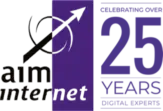How To Run Effective Remote Meetings
In today’s digital age, remote work has become increasingly popular, with more and more companies opting for virtual meetings over traditional in-person gatherings. While remote meetings offer many benefits, such as increased flexibility and cost savings, they also come with their own set of challenges. Running effective remote meetings requires careful planning, clear communication, and the right tools to ensure that everyone stays engaged and productive.
For website design professionals, remote meetings are a common occurrence, as they often collaborate with clients and team members from different locations. To ensure that these meetings run smoothly and achieve their intended goals, there are several key strategies that can be implemented.
- Set clear objectives: Before scheduling a remote meeting, it’s important to define the purpose and objectives of the meeting. This will help to keep the discussion focused and ensure that everyone is on the same page. Clearly communicate the agenda and goals of the meeting to all participants beforehand so that they can come prepared and contribute effectively.
- Choose the right technology: The success of a remote meeting largely depends on the technology used to facilitate communication. Choose a reliable video conferencing platform that offers features such as screen sharing, chat functionality, and the ability to record the meeting for future reference. Make sure that all participants are familiar with the technology and have access to the necessary tools before the meeting starts.
- Establish ground rules: To maintain order and ensure that everyone has a chance to speak, establish ground rules for the meeting. This could include guidelines on when to mute and unmute microphones, how to indicate when someone wants to speak, and how to address technical issues that may arise. Encourage active participation from all attendees and create a supportive environment where everyone feels comfortable sharing their ideas.
- Keep the meeting concise: Remote meetings can easily become lengthy and unproductive if not managed properly. To prevent this, set a time limit for the meeting and stick to it. Keep the discussion focused on the agenda items and avoid going off on tangents. Encourage participants to be concise in their contributions and to stay on topic to ensure that the meeting stays on track.
- Follow up: After the meeting has concluded, send out a summary of the key points discussed, action items, and next steps to all participants. This will help to reinforce the decisions made during the meeting and ensure that everyone is clear on their responsibilities moving forward. Follow up on action items and deadlines to keep the momentum going and ensure that progress is being made.
By following these strategies, website design professionals can run effective remote meetings that keep everyone engaged and productive. Remote meetings offer a convenient and flexible way to collaborate with clients and team members from different locations, but they require careful planning and communication to be successful. By setting clear objectives, choosing the right technology, establishing ground rules, keeping the meeting concise, and following up afterwards, website design professionals can ensure that their remote meetings are productive and achieve their intended goals.
